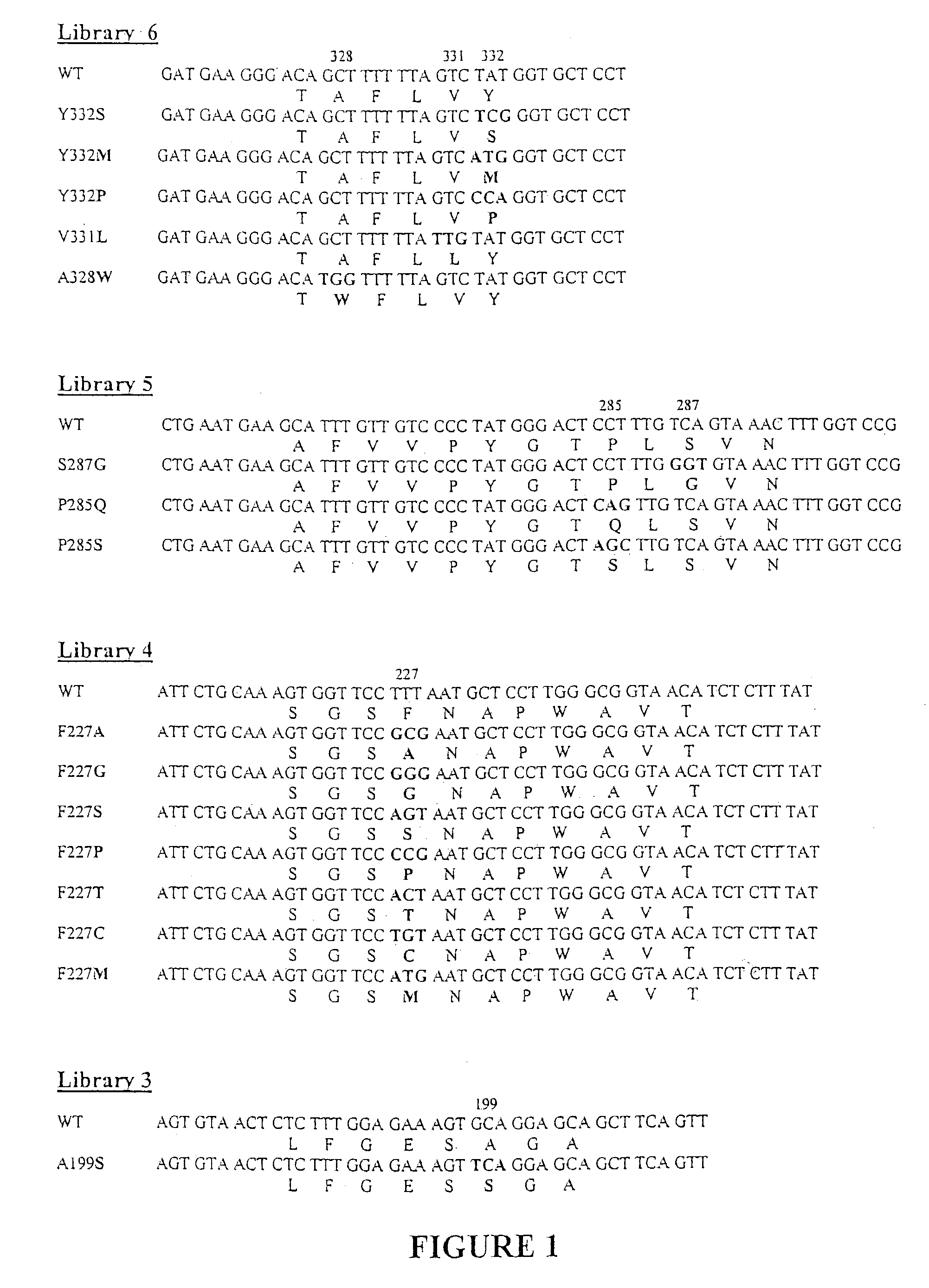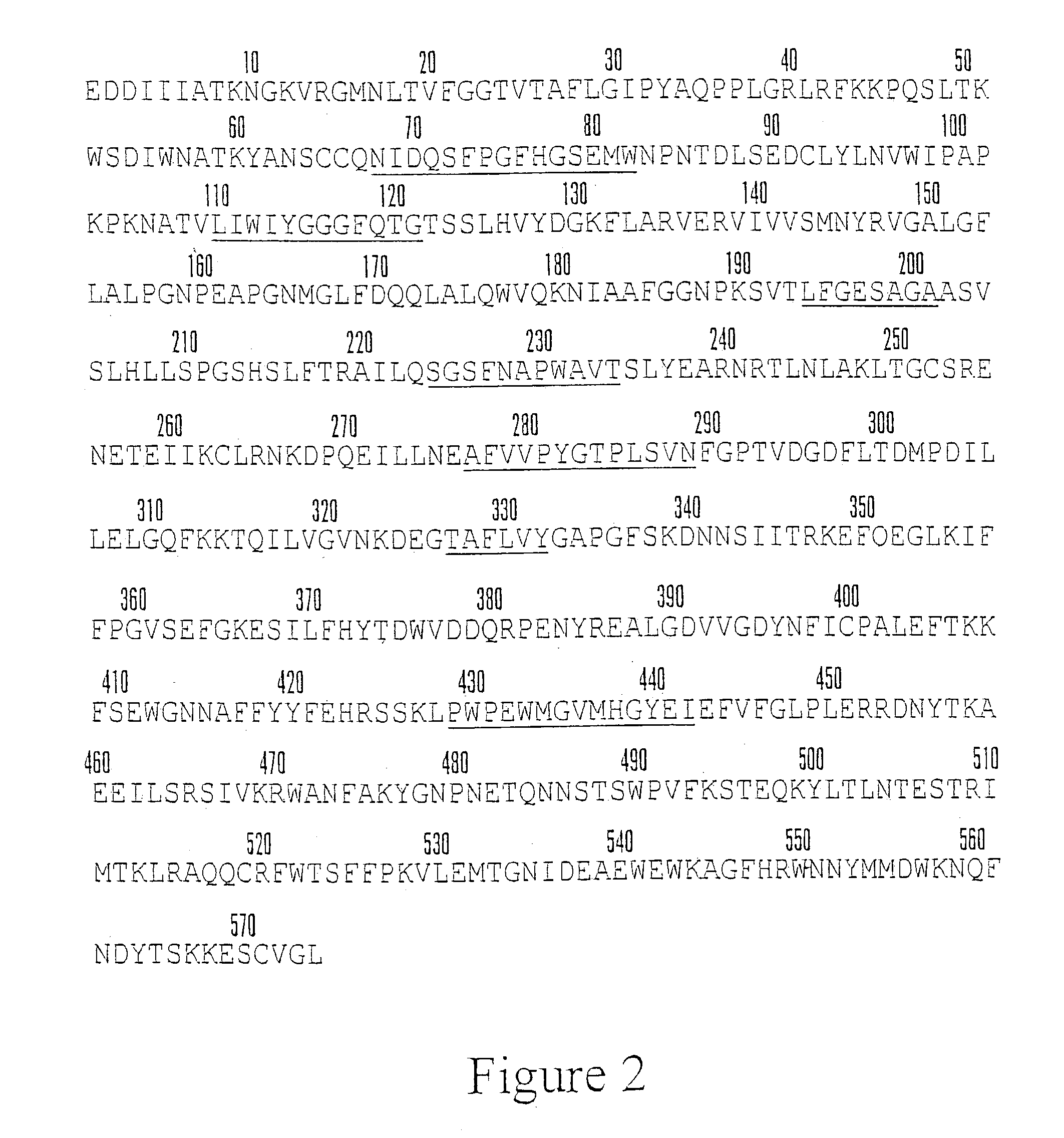Butyrylcholinesterase variant polypeptides with increased catalytic efficiency and methods of use
- Summary
- Abstract
- Description
- Claims
- Application Information
AI Technical Summary
Benefits of technology
Problems solved by technology
Method used
Image
Examples
example i
Development of a Cocaine Hydrolysis Assay
[0129]This example describes the development of a cocaine hydrolysis assay that permits the efficient analysis of hundreds of butyrylcholinesterase variants simultaneously.
Development of an Isotope Tracer Cocaine Hydrolysis Assay.
[0130]For the purpose of validating new cocaine hydrolysis assays, butyrylcholinesterase hydrolysis of cocaine was first measured as described previously (Xie et al., Mol. Pharmacol. 55:83–91(1999)), using high-performance liquid chromatography (HPLC). Briefly, reactions containing 100 μM cocaine in 10 mM Tris, pH 7.4 were initiated by the addition of horse butyrylcholinesterase (ICN Pharmaceuticals, Inc., Costa Mesa, Calif.) and incubated 2–4 hours at 37° C. Following the incubation, the pH was adjusted to 3, and the sample was filtered. Subsequently, the sample was applied to a Hypersil ODS-C 18 reversed phase column (Hewlett Packard, Wilmington, Del.) previously equilibrated with an 80:20 mixture of 0.05 M potassi...
example ii
Synthesis and Characterization of Butyrylcholinesterase Variant Libraries
[0137]This example describes the synthesis and characterization of butyrylcholinesterase variant libraries expressed in mammalian cells.
[0138]In order to facilitate the synthesis of libraries of butyrylcholinesterase variants, DNA encoding wild-type human butyrylcholinesterase, a truncated, enzymatically active, monomeric version of human butyrylcholinesterase, and the A328Y mutant that displays a four-fold increased cocaine hydrolysis activity are cloned into a modified doublelox targeting vector, using unique restriction sites. In preliminary assays the wild-type human butyrylcholinesterase was captured more efficiently and, therefore, serves as the initial DNA template for the synthesis of libraries of butyrylcholinesterase variants.
Synthesis of Focused Libraries of Butyrylcholinesterase Variants by Codon-based Mutagenesis
[0139]A variety of information can be used to focus the synthesis of the initial librar...
example iii
Characterization of Butyrylcholinesterase Variants that Display Enhanced Cocaine Hydrolysis Activity
[0160]This example describes the molecular characterization of butyrylcholinesterase variants that display enhanced cocaine hydrolysis activity in the microtiter assay described below. The cocaine hydrolysis activity measured in the microtiter assay format is further confirmed using greater amounts of the butyrylcholinesterase variants of interest. In addition to the microtiter-based assay, the activity of the clones is demonstrated in solution phase with product formation measured by the HPLC assay to verify the increased cocaine hydrolysis activity of the butyrylcholinesterase variants and confirm that the enhanced hydrolysis is at the benzoyl ester group.
[0161]The kinetic constants for wild-type butyrylcholinesterase and the best variants are determined and used to compare the catalytic efficiency of the variants relative to wild-type butyrylcholinesterase. Km values for (−)-cocain...
PUM
| Property | Measurement | Unit |
|---|---|---|
| Current | aaaaa | aaaaa |
Abstract
Description
Claims
Application Information
 Login to View More
Login to View More - R&D
- Intellectual Property
- Life Sciences
- Materials
- Tech Scout
- Unparalleled Data Quality
- Higher Quality Content
- 60% Fewer Hallucinations
Browse by: Latest US Patents, China's latest patents, Technical Efficacy Thesaurus, Application Domain, Technology Topic, Popular Technical Reports.
© 2025 PatSnap. All rights reserved.Legal|Privacy policy|Modern Slavery Act Transparency Statement|Sitemap|About US| Contact US: help@patsnap.com



